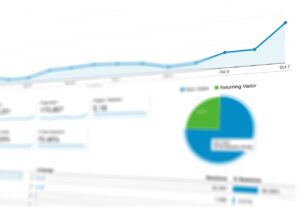
Using patent analytics to unlock the true value of your patent data can have an impact on your business. It can help you get the most from your patent data, increase your IP portfolio, and identify new opportunities.
Get the most from your patent data
Using patent data is a great way to enhance your decision making process. Aside from helping you identify competitors, analyze your technology landscape, and prepare for the next step, patent analytics can also inform your monetization strategy.
It is important to get the most out of your patent data in order to achieve the best possible impact on your business. The use of patent analytics is increasing at a rapid pace. There is an opportunity for startups to use patent data in order to develop their products or even monetize their assets.
One of the ways that startups can maximize their business impact with patent analytics is by identifying new markets. This can be done by analyzing a patent’s filing history. This can help a startup identify technologies that are leading the industry, as well as identify up and coming markets.
Another advantage of patent analytics is that it can help a company find potential partners or merger/acquisition targets. This can improve a company’s decision-making process and reduce risks.
The use of analytics for this purpose is referred to as patent mapping. This method can be incorporated with financial reports to give a more accurate picture of a company’s value.
In addition to identifying new technologies, patent analysis can also reveal the areas where innovation is happening within a company. This can be valuable information for a business leader, who can then use the information to form an opinion about the direction of a particular company.
For example, if a competitor files a lot of patents, it may mean that they are interested in a certain technology. This can help a company determine where their competitor is trying to expand.
Using predictive analytics, a company can predict when it is time to validate a patent. It can also identify which patents to prune and which to keep. This can save the company a lot of money by reducing the number of patents it needs to file in the future.
Another benefit of integrating patent data with financial reports is that it can provide insight into your company’s relative market position. The data can also be used to evaluate outside counsel’s performance.

Increase your business impact
Using patent analytics, you can get an overview of the technology landscape before you make a decision to enter a new project area. It can also provide you with actionable data that will help you make better business decisions.
In the past five years, the global market for patent analytics has advanced at a rapid rate. In particular, AI-based technologies have improved the sophistication of information.
This technology allows you to conduct pre-emptive analysis, assess your competitive landscape, and measure the strength of your IP portfolio. It can also help you determine which patents to keep and which to prune. You can also use this type of information to determine the most effective way to engage with an examiner.
Depending on the application, patent analytics may involve a combination of qualitative and quantitative analysis. Some of the most important applications include financial analysis and reporting, strategic and competitive intelligence, and licensing and business development.
While the world of analytics is still in its infancy, the potential for these tools is enormous. They are reshaping the industry, and tech companies naturally gravitate toward them. These tools will continue to improve as AI and machine learning technology develop.
In addition to offering useful information, they can also serve as a valuable tool for planning around M&A strategies. It is also a good idea to benchmark your company’s patents, since doing so can help you determine your strengths and weaknesses in relation to the competition.
You can also find a variety of analytics solutions in the patent analytics space, including technology intelligence, competitor analytics, and financial analytics. These will allow you to identify the trends and technological information that are most relevant to your business. However, obtaining this information requires complete and accurate data.
For example, you can perform a patent-related SWOT analysis to identify emerging trends and the best ways to approach a new product or service. You can also get detailed information about your cost of maintenance and prosecution of your patents.
As the world of intellectual property continues to evolve, patent analytics are likely to become more sophisticated in the coming years. During the forecast period, the global patent analytics market is projected to grow at a 12.7% CAGR.

Identify new opportunities
Identifying new opportunities with patent analytics has been a major issue in academia and practice. A regular updated patent database helps technology leaders to stay abreast of technological advances and development. This provides actionable data that can be used to make better business decisions.
This is why tech companies naturally gravitate toward patent analytics tools. By using these tools, companies can improve their competitive intelligence, product development, and monetization efforts. In addition, these tools can help firms understand their competitors’ strategies, evaluate risks, and prepare for the next step.
These tools can also provide companies with information on technology trends, competitors, and licensing opportunities. Using these tools, companies can identify emerging technologies, assess their competitive landscape, and make well-informed business decisions.
By applying patent analytics to the patent documents, companies can discover opportunities to develop and monetize new products and services. This can be done by combining quantitative and qualitative methods. For example, the F-term classification method identifies and classifies patent documents according to technical attributes. It produces a detailed description of the technologies. This can then be used as an effective guide to generating new technology ideas.
For startups, analytics can also be applied to develop and monetize their own patent portfolios. This can give them unique insights into their market and enable them to align their IP portfolio strategy with their business. This can also allow them to forecast future conditions.
Other important applications of patent analytics include financial analysis, reporting, and strategic and competitive intelligence. By analyzing patents, firms can learn about their competitors, the technology being deployed worldwide, and potential threats. In addition, patent analytics can provide actionable intelligence that can strengthen the relationships with current clients.
The increasing number of patent applications is likely to boost the global patent analytics market. However, the market is still in its early stages of development. It is projected to grow at a 12.7% CAGR from 2023 to 2028.
During the last five years, the patent analytics space has developed rapidly. This can be attributed to the increasing number of patents, innovative solutions in emerging economies, and the Internet of Things.
Boost your IP portfolio

Boost your IP portfolio with patent analytics. With the help of a well-defined business process, you can move ideas from concept to valuable IP. Whether you are seeking to enhance your company’s product or service, increase profitability or reduce costs, you can leverage the power of your intellectual property.
For example, analysis of another company’s IP can identify overlaps, complementary areas, and synergies that can boost your own IP portfolio. In addition, you can assess the market position of your competitors. You can also determine which assets are critical business drivers and which need to be pruned.
You can use patent analytics to evaluate the competitive landscape, assess your own technology, and evaluate the impact of new patents. You can also use analytics to evaluate the value of your existing assets. You can also find out which patents are worth keeping and which need to be trimmed.
Users can quickly identify relevant patents and reduce the time and cost of manual processes. The offering also increases the accuracy of results. The platform helps clients analyze trends, benchmark against competitors, and unify data. You can also access your portfolio in real time. The tools provided by the company allow you to gain unique insights into your market and make better data-based decisions.
In sum, modern patent support software enables you streamline the IP portfolio management process. You can use the tool to quickly and easily add new patents, remove existing ones, or assess new assets. The tool also allows you to analyze the commercialization potential of your inventions and to perform periodic reviews of your IP portfolio. The tool also provides key data from previous evaluations and documents that were included in your portfolio.
